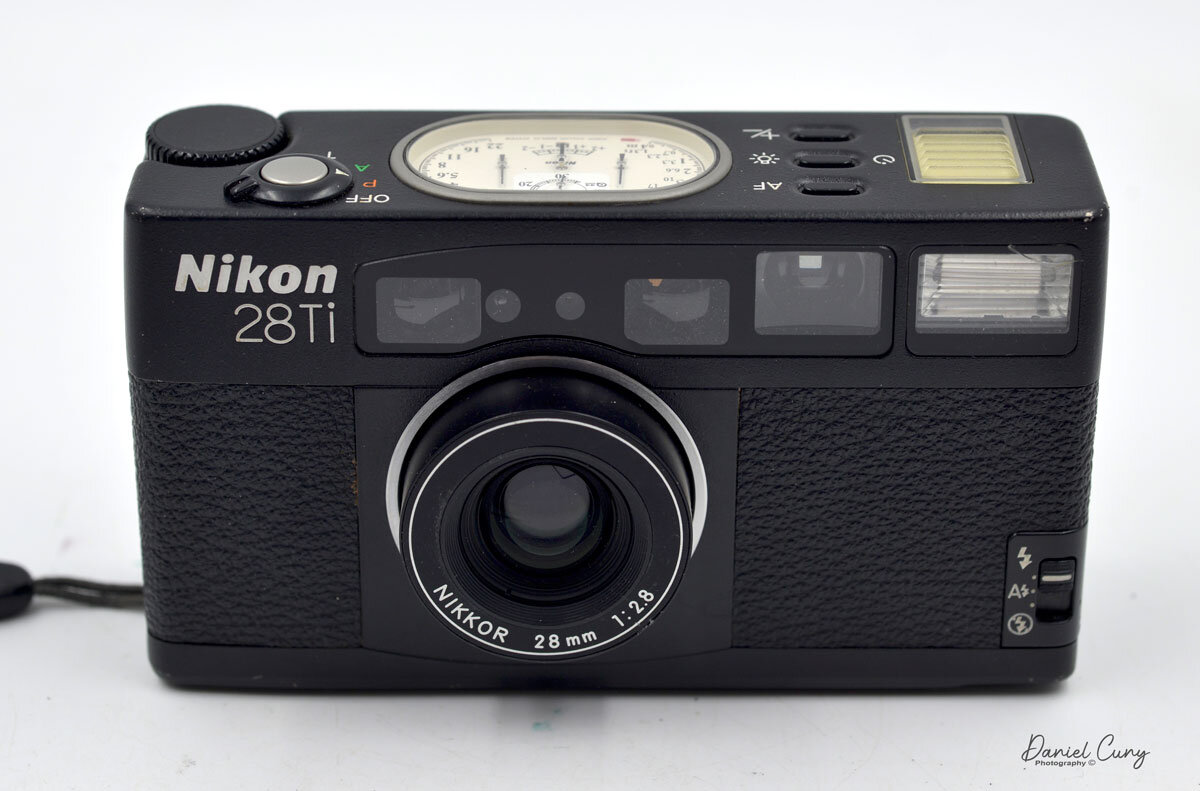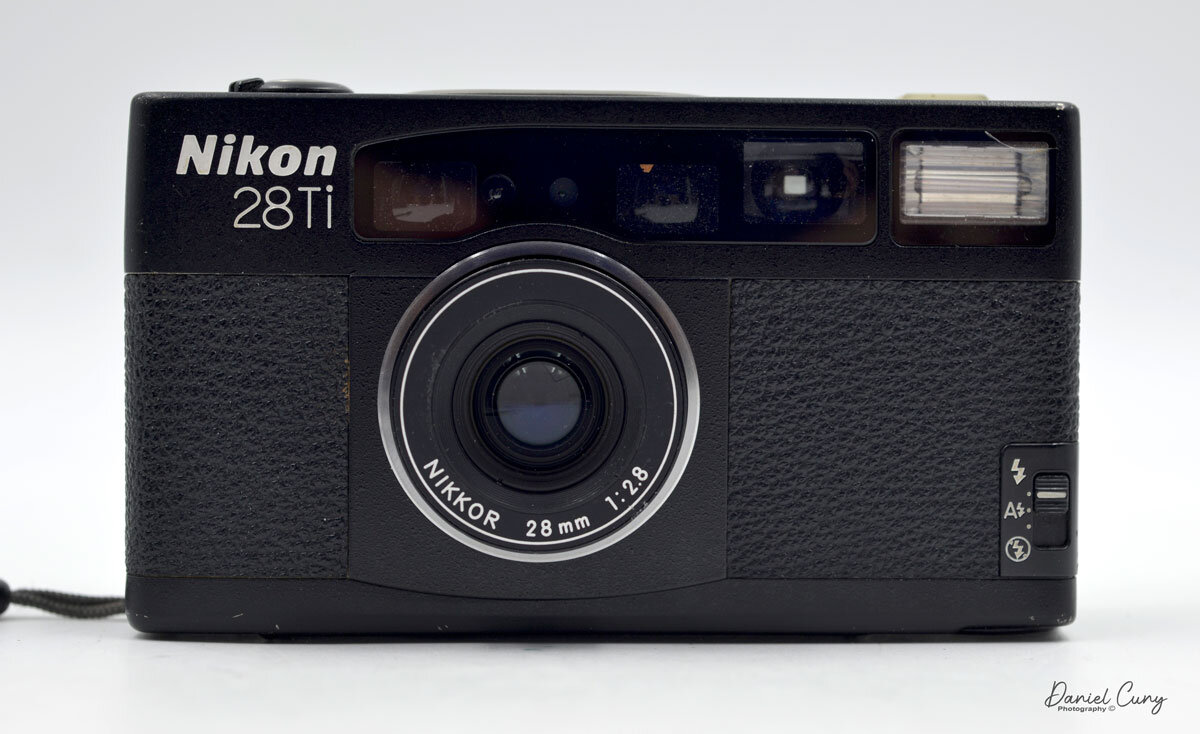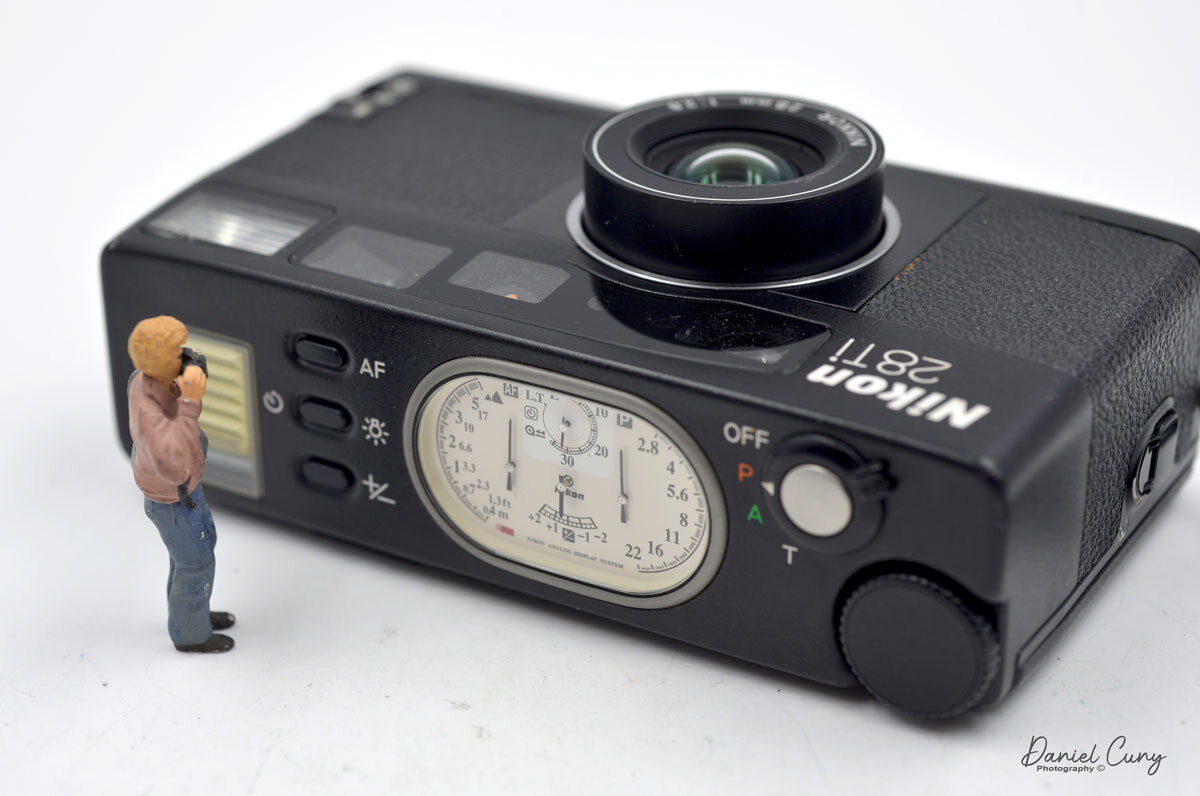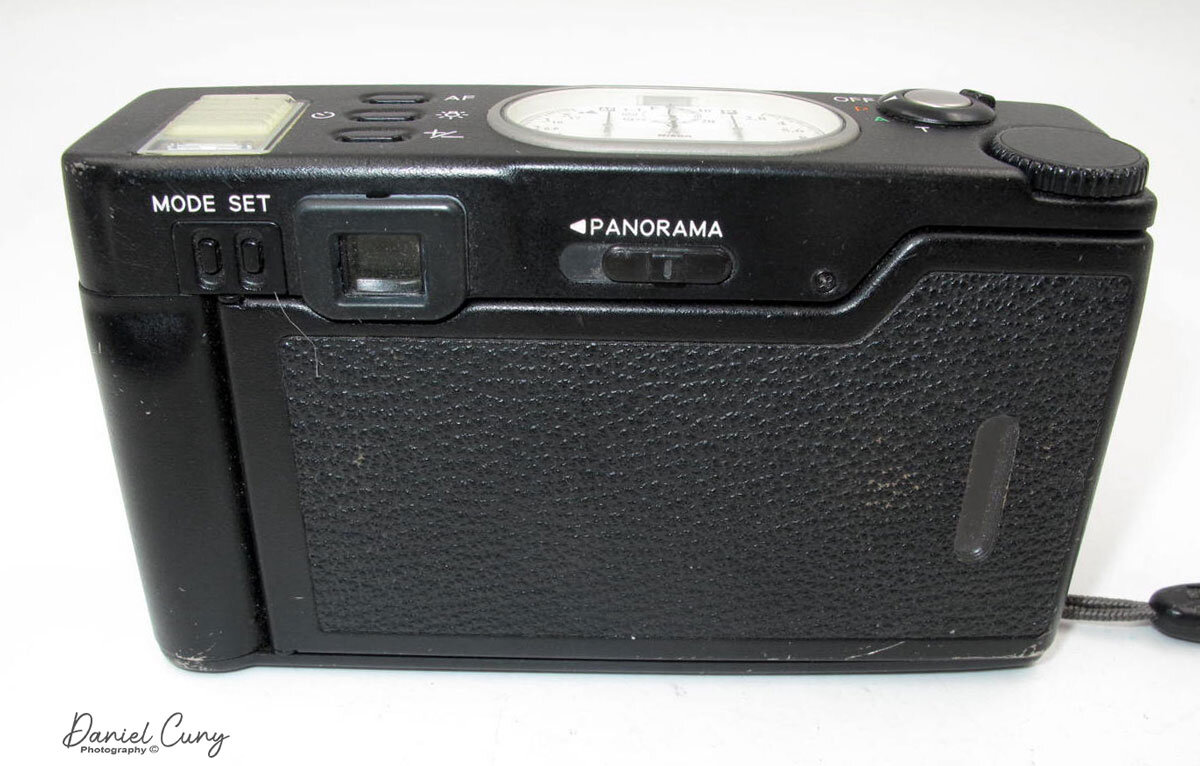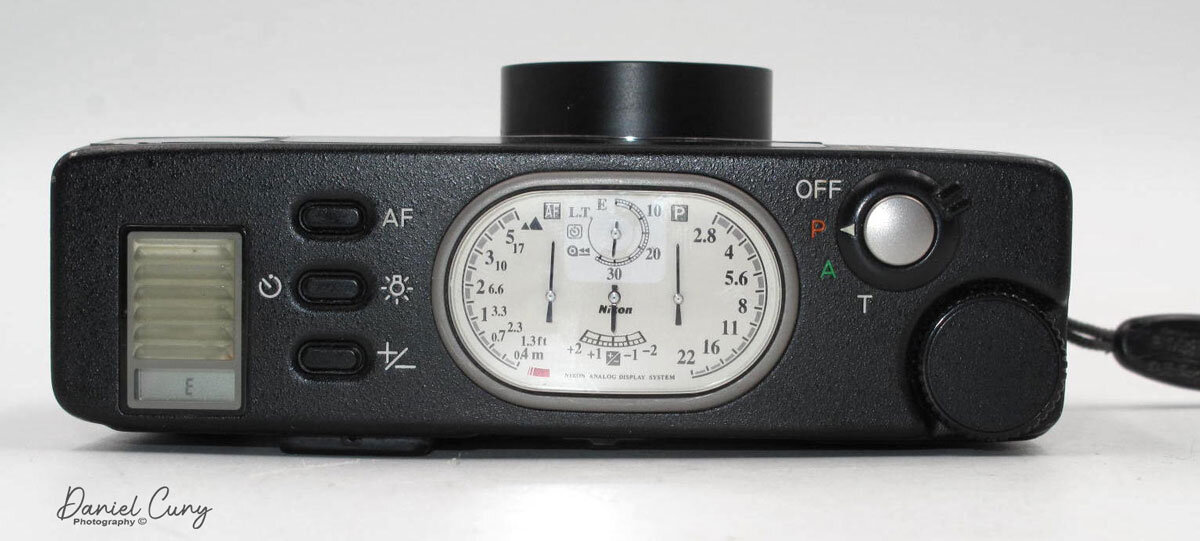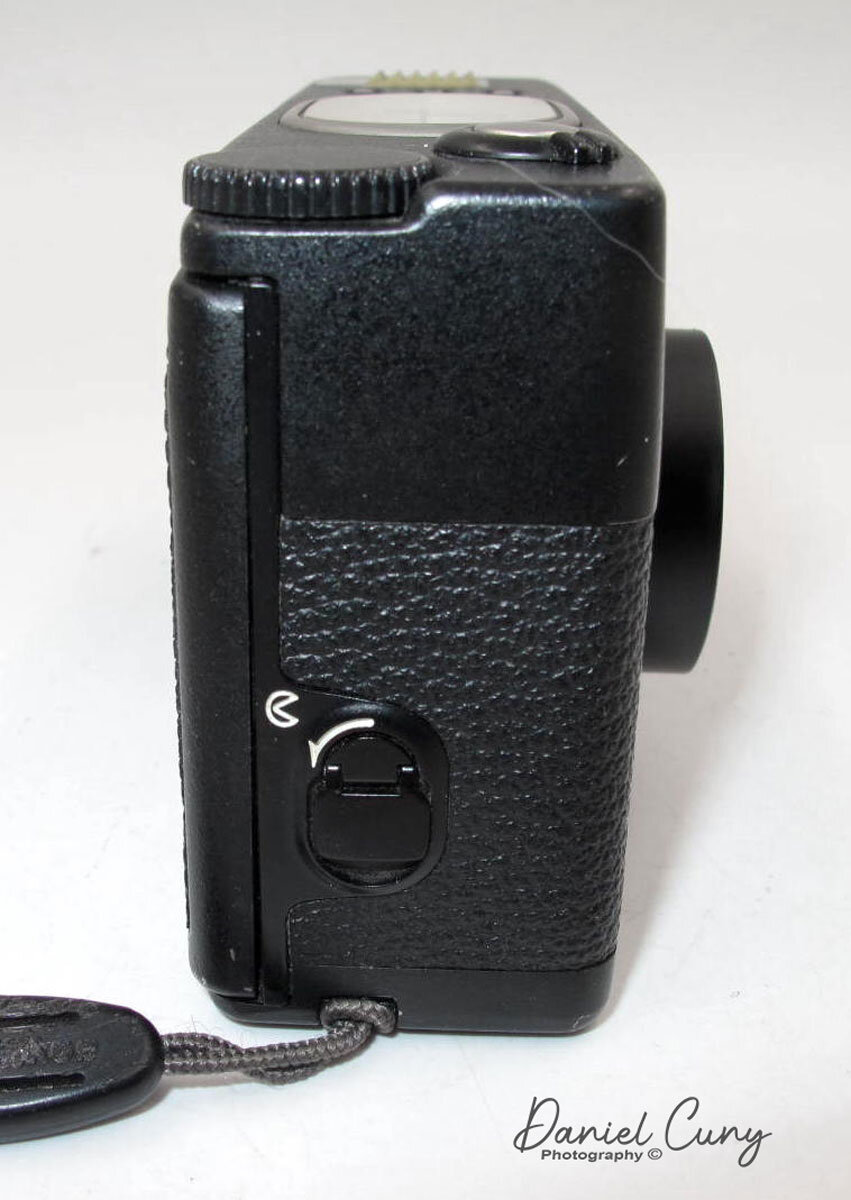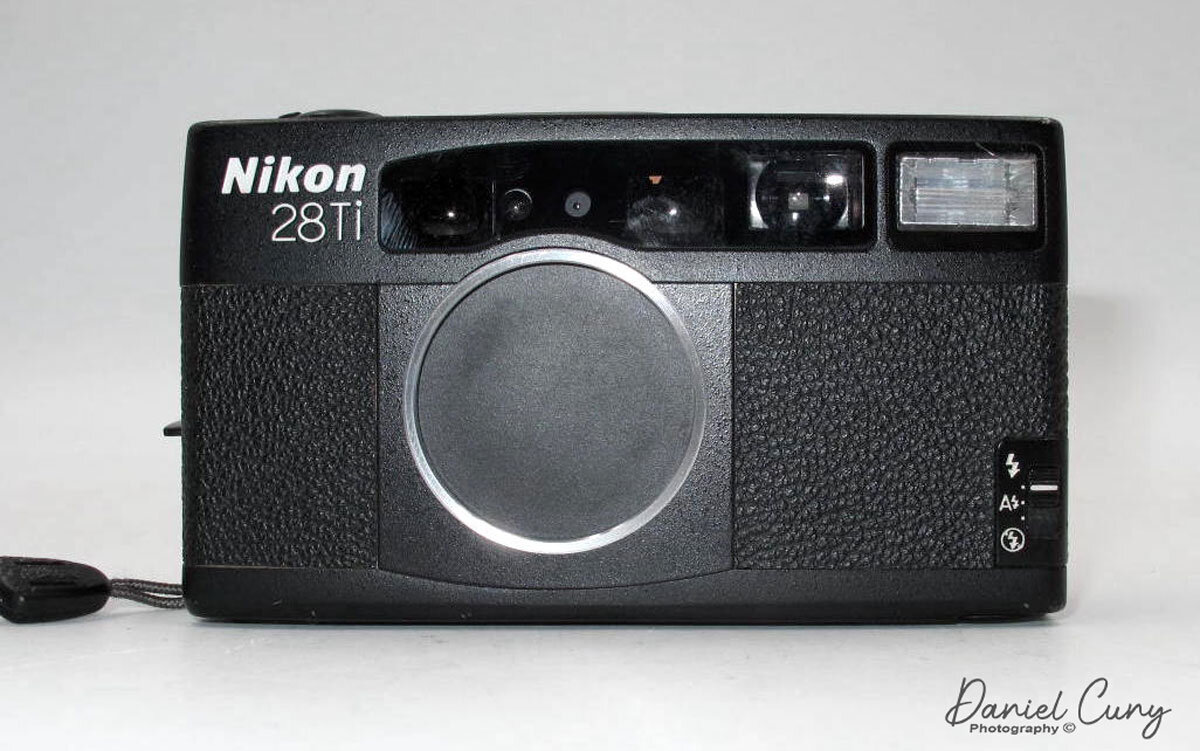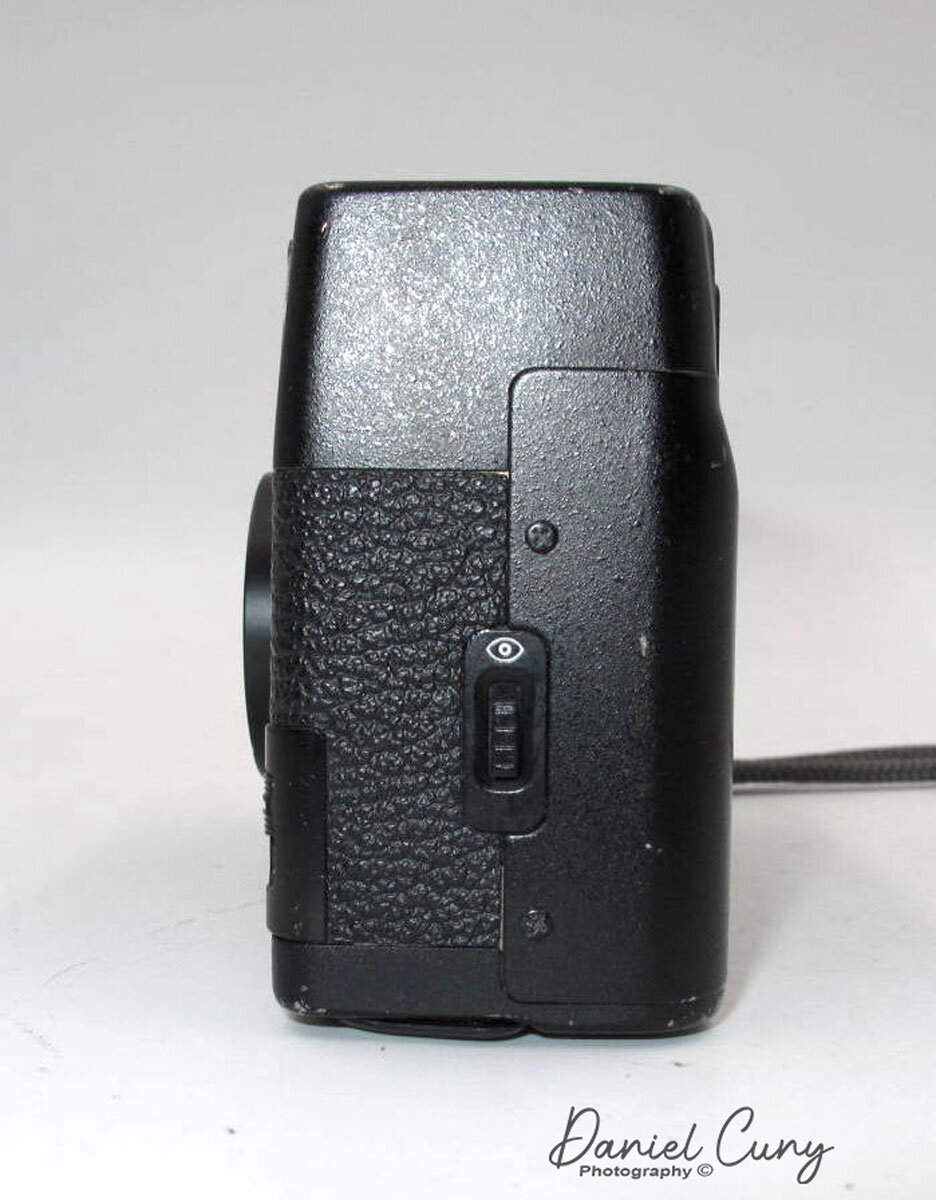In this week's blog post, I'm writing about a camera I've had in my collection for a few years now and one that I've always wanted to own, ever since I laid eyes on it when the camera was introduced in 1994. The 28Ti is the younger brother to the popular 35Ti camera, which came out a short time before the 28Ti and was similar to the Minolta TC-1, Contax T cameras, and a range of other well built "point & shoot" style cameras that targeted the more affluent and travel market.
My Nikon 28Ti, camera case, and interested photographer.
The Company
Nikon started producing optical instruments such as microscopes and rangefinders in 1917 in Tokyo, Japan. During the early days, Japan had urgent needs for these types of optics. The person responsible for doing this was Koyata Iwasaki, the president of Mitsubishi and the nephew of Mitsubishi founder Yataro Iwasaki.
Plans started with establishing an optics company by combining the optical instruments division of Tokyo Keiki company and the mirror division of Iwaki Glass with Fujii Lens Manufacturing. This combination of companies started Nippon Kogaku K.K. which is, the Nikon we know today.
In 1921, photographic optics were becoming more refined. Nikon invited 8 German engineers to Japan to help Japan catch up with the development and design of photo optics. They created the Anytar lenses after the Tessar design. Buy 1931, Nikon lens designs were no longer in the Tessar design and optical quality shadow.
Nikkor lenses started in 1933 with the Aero-Nikkor 50cm f4.8 lens used for ariel mapping purposes. They also created a 70cm F5 and a 180cm F4.5 lens which is very difficult to find today.
After WWII, Nikon started making 35mm cameras. The first camera, the Model 1, was introduced in March 1948 and was heavily advertised. Production couldn't keep up with the demand for domestic cameras of the time. There were many complaints about the design. In 1949, they had worked out many of the problems when the Model M was introduced.
In 1950, the introduction of the Nikon S line and later the SP, along with a strong line of high-quality lenses, put Nikon on the radar for many newspapers and professionals photographers and made them the camera system they are now known.
My Camera
The Nikon 28Ti is a very sturdy camera with an all-black finish, which is more pleasing than the two-toned 35Ti camera. That's just a personal opinion for me. The feature that draws me to this camera is the analog dials on the top of the camera, which contrasts with the black camera body. The dials indicate things like aperture settings, focus distance to the subject, frame counter, and over/under exposure compensation. All of these are done with the precision of a fine Swiss watch and resembles one as well.
The size of the camera is approximately 4.5″ wide, 2.5″ tall, and 1.4″ deep and weighs in at 11.2 oz. The camera body is a titanium body with a retractable 28mm f2.8 lens, from what I can tell. According to technical specification, the lens is a Nikkor 28mm F2.8; multi-coated seven elements in 5 groups, with integrated coatings and extra-low dispersion elements. The camera's autofocus has 541 steps in a range which is slightly less than the 833 in the 35Ti.
The electromagnetic shutter has speeds range from 2 sec. to 1/500 in "P" mode (Program) or up to 1/330 in "A" mode for Aperture Preferred. There is also an "LT" mode similar to "B" and has a maximum time of 10 minutes.
There is a "panoramic" mode that blades off the shutter area to achieve a panoramic photo on the negatives, popular in the 1990s. There is also the ability to over or underexpose images by up to 2 stops. The camera also features a Date feature on the camera, but I've yet figured out how to set them as the buttons to do so on the camera's back are very small and difficult to push.
Looking on top of the camera are the elegant dials which I enjoy, and when you press, items like +/- can be manipulated by the scroll wheel on the back right of the camera when the film advance would be on an SLR camera. Around the shutter release is the camera mode switch. Pressing the AF button on top and turning the scroll wheel allows you to focus manually. The Lamp button turns on the lamp on the dial display and lights up the viewfinder lines for the image area.
Top view of the Nikon 28Ti camera with the controls
There is an "H" displayed in the viewfinder when the lighting is too bright and "L" when the lighting is too low for properly exposed images.
On the right side of the camera is the dial that opens the back of the camera. The camera sets ISO with the DX coding. If no DX film is used, then the ISO is set to 100. The camera has auto wind and auto re-wind. There is a button on the baseplate that allows for re-wind the film mid-roll if needed.
On the front of the camera is the flash control. You have flash on, Autoflash, No flash, and on the side of the camera by the flash control is a switch to set red-eye reduction. The lens automatically comes out when powered up and retracts when turned off.
To me, the quality of the optics is what I enjoy. Some people prefer the less wide 35mm, but not me. Here are some images from a walk at my local dog park I did this week.
Images from the Nikon 28Ti Camera
Winston, a friends Korgi
Giving a friem=nd a drink of water
Electrical tower in dog park
Regular view
Panoramic view
Self Portrait.
Thank you for taking a few minutes out of your busy schedules to read about one of the cameras I need to take out and use more often—another fantastic camera in the collection. Until my next post in a couple of weeks, please be well.

